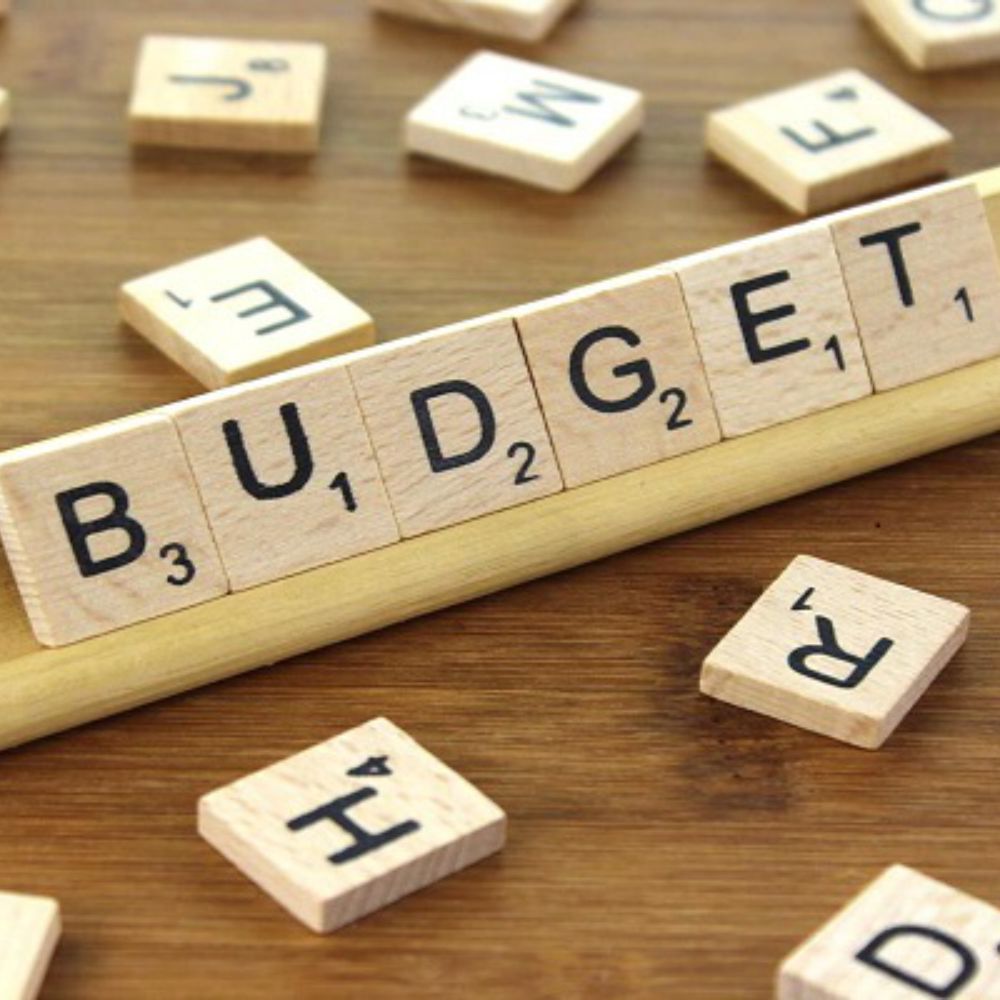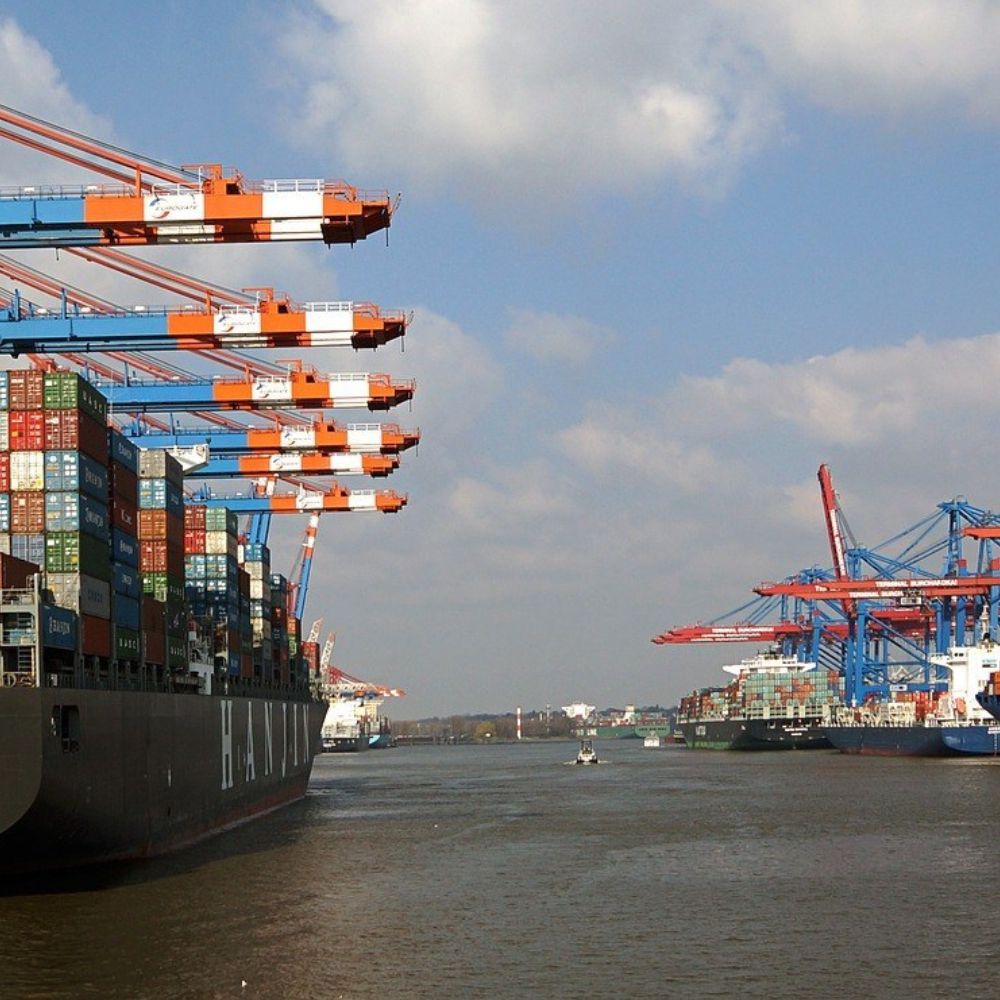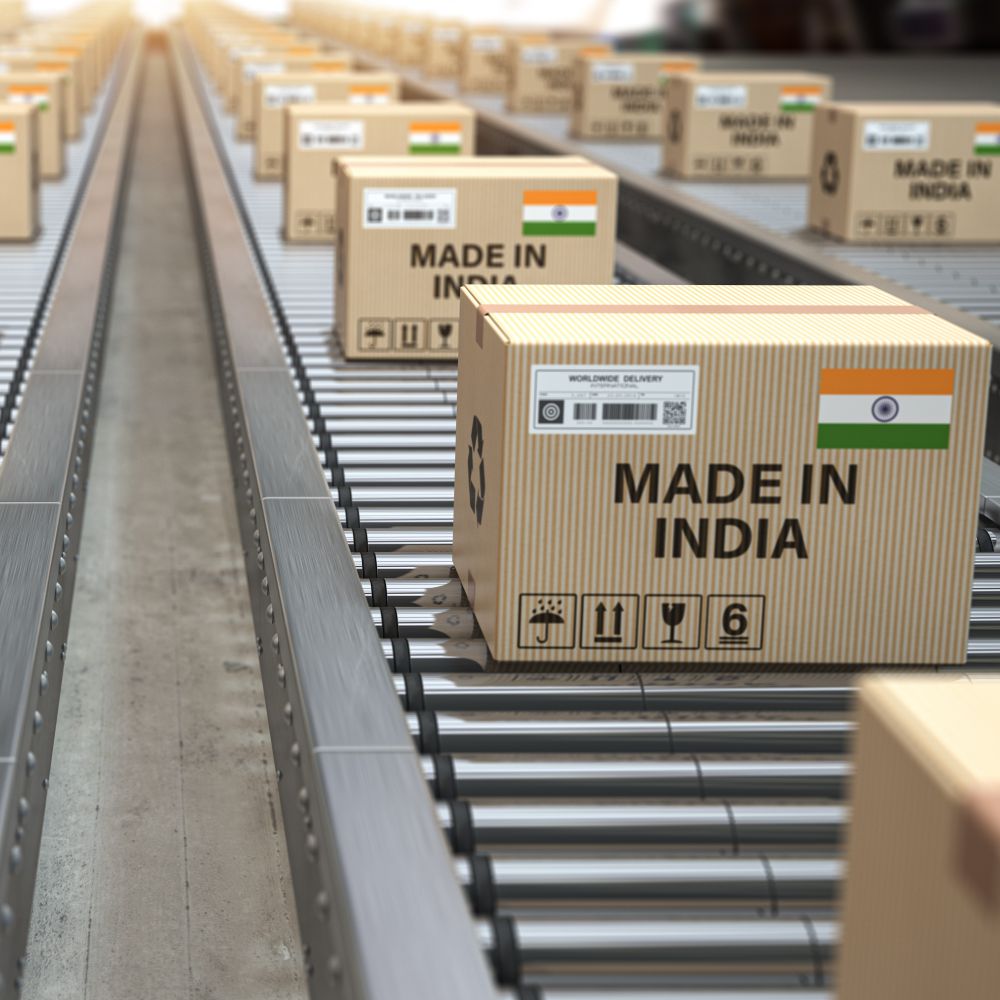During the election year, the government unveiled the interim budget, laying down a comprehensive roadmap for fostering inclusive development, to reach the goal of ‘Viksit Bharat’ or ‘Developed India’ by 2047. Logistics sector is going to play a catalytic role in this ambitious journey and that’s what precisely the government at the helm has been emphasizing through recent policy interventions. Here’s a recap of announcements made at the recently tabled Interim Budget 2024-25…
A Colliers report on Interim Budget 2024-25 highlighted that the interim budget indicates the government’s continued commitment towards infrastructure development, affordable housing, green energy initiatives, research & innovation and digital infrastructure. These measures are likely to play a critical role in ensuring sustained growth across diverse segments within real estate. The detailed version of the Union Budget to be announced in July 2024 is expected to further build on the cornerstones of green energy and innovation while retaining the focus on transforming India’s infrastructure and real estate landscape. Government’s continued push for infrastructure development in the form of multimodal logistics parks, expansion of airports, industrial corridors, ports, expressways and suburban railway systems will remain pivotal if India is to achieve the long term target of USD 7 trillion economy by 2030.
The Interim Budget for 2024-25 announcement for the implementation of three Economic Railway Corridor identified under the PM GatiShakti for enabling multi-modal connectivity, including (i) energy, mineral, and cement corridors, (ii) port connectivity corridors, and (iii) high traffic density corridors, is a big push towards logistics efficiency and reduction of logistics cost related to rail movement. It will decongest high density rail routes and facilitate modal shift from road to rail and to coastal shipping, thereby reducing carbon footprint in logistics.
According to ICRA, the Interim Budget for FY2025 has reiterated its focus on improving air connectivity through airport infrastructure development, given the growing air traffic demand, especially in tier-2 and tier-3 cities. New routes offered by airlines, coupled with large aircraft orders to cater to growing air travel demand, will further boost domestic air travel. As far as infrastructure is concerned, there is a healthy 16.9% YoY increase in capital expenditure to Rs. 11.11 trillion in FY2025 BE from Rs. 9.5 trillion in FY2024 RE. The outlay towards interest free loan for capex to states will rise to Rs. 1.3 trillion in FY2025 BE from Rs. 1.1 trillion in FY2024 RE.
There is also a modest increase of ~2% in the capital outlay for Railways to Rs. 2.65 trillion primarily driven by a 5% rise in the budgetary support for capex to Rs. 2.52 trillion in FY2025 BE from Rs. 2.40 trillion in FY2024 RE. Gross budgetary support for the Ministry of Road Transport & Highways increased marginally by 3% to Rs. 2.72 trillion in FY2025 BE from Rs. 2.65 trillion in FY2024 RE; allocation towards the National Highways Authority of India (NHAI) has remained flat at Rs. 1.68 trillion in FY2025 BE.
Increase in capital expenditure, although lower than the previous three years, bodes well for the infrastructure and construction sectors and would ensure that the traction of development is sustained. Allocation towards ‘New Schemes’ accounts for 6% of the overall Rs. 11.11 trillion capex, which is a new inclusion in the Union Budget. Continued strong outlay towards railways is expected to boost demand for the wagon and rolling stock manufacturing segments.
The Rs. 1.3-trillion outlay to states in the form of interest-free loan remains a positive for state-funded infrastructure projects like roads, irrigation and water supply projects. The proposed railway corridors are expected to provide fillip to the construction sector, while enabling multi-modal connectivity under the PM Gati Shakti Scheme and reducing the logistics cost.
With regards to Ports, Shipping & Shipbuilding, there is allocation of Rs. 7.0 billion for Sagarmala Project (revenue grant of Rs. 6.6 billion) over Rs. 5.3 billion RE in the previous fiscal (Rs. 4.0-billion revenue grant and Rs. 1.3-billion capital grant as per revised estimates). Rs.1.0 billion has been allocated for shipbuilding and R&D (PY: Rs. 1.1 billion) and Rs. 1.0 billion as capital grant is offered for Inland Water Transport Authority of India (IWAI) (PY: Rs. 1.0 billion). Greater thrust is laid on developing economic railway corridor with emphasis on improving port connectivity and projects under PM Gati Shakti to enable multimodal connectivity.
Budgetary allocation for Sagarmala and shipbuilding, research and development (R&D) is broadly similar to last year’s levels. As this is mainly a revenue grant, the impact on the port sector is expected to be neutral. Capital grant for IWAI is a positive for the inland waterway infrastructure creation. Long term focus on improving inland as well as port connectivity. Decongestion of railway networks will support port traffic and bring down logistics costs.
“India has made significant strides in the Global Maritime Arena. Under the Sagarmala Programme launched by the Prime Minister for Port Led Industrialization, 14 projects worth Rs. 55,800 Crores have been identified, with 9 projects totalling Rs. 45,800 Crore already completed. The PM Gati Shakti National Master Plan and the National Logistics Policy have greatly enhanced the national logistics roadmap, facilitating swift port-led industrialization and city development,” stated Shri Sarbananda Sonowal, Union Minister of Ports, Shipping, and Waterways.
ON THE SIDELINES
During the recent 'PM GatiShakti Summit: Towards Logistics Efficiency and Integrated Infrastructure Planning', organized by the Federation of Indian Chamber of Commerce & Industry (FICCI), in collaboration with the Department for Promotion of Industry and Internal Trade (DPIIT), Sh. Rajesh Kumar Singh, Secretary, DPIIT, stated that the PM GatiShakti National Master Plan is transforming the logistics and supply chain management ecosystem in the country. He mentioned that the India’s Growth Story is backed with solid structural reforms, robust macroeconomic management, and investment in physical, digital and social sector infrastructure. This investment in social infrastructure will lead to a multiplier effect in the country and contribute to economic growth. He also highlighted that, with the formalization of the economy, higher levels of financial inclusion are being obtained, the digital divide is being bridged, and significant investment in financial assets is observed. In line with the Prime Minister’s Vision and India’s commitment to the Global South, Secretary, DPIIT highlighted that PM GatiShakti, currently being rolled out at the district level, will soon be promoted as a global public good.
Smt. Sumita Dawra, Special Secretary, Logistics Division, DPIIT, highlighted that infrastructure and logistics are key drivers of the economic growth. Through launch of PM GatiShakti National Master Plan and National Logistics Policy, government has prioritized large-scale infrastructure projects and improved logistics service efficiency respectively. Some of the key reforms to improve logistics efficiency includes, 23 States/UTs notified State Logistics policies, Land Port Management System (LPMS), digitization at Ports; NLP Marine, and FASTAG. She stated that one of the achievements from these reforms have been improvement in the World Bank’s Logistics Performance Index Ranking from 44 in 2018 to 38 in 2023. Further, three indigenously developed data driven support mechanism systems have been developed (ULIP, LDB, and PM GatiShakti National Master Plan).
She also highlighted the contribution of the PM GatiShakti programme towards integrated planning, creation of Next Generation Infrastructure, and promoting people-centric development. Some of the best use cases of PM GatiShakti in sectors such as telecom, petroleum and natural gas, renewable energy, area-based planning, etc., were also showcased. Further, the usage of PM GatiShakti is also reducing critical last & first mile gaps, minimizing disruption to natural resources, avoiding duplication of infrastructure creation, and promoting capacity sharing. Investment opportunities in various sectors, including Robotics, Logistics, Warehousing, Waste reduction, and Packaging, were also emphasized, demonstrating the program's impact on logistics and supply chain management.
TRACKING THE PROGRESS OF DEDICATED FREIGHT CORRIDORS
Close to 90% of the dedicated freight corridors have been commissioned till 10 February 2024, the Parliament was informed recently. Indian Railways has undertaken the ambitious project of constructing two Dedicated Freight Corridors (DFCs), namely Eastern and Western Dedicated Freight Corridors (EDFC & WDFC), to facilitate faster evacuation of freight traffic. While the 1,506-km-long WDFC runs from Dadri in Uttar Pradesh to Jawaharlal Nehru Port Terminal (JNPT) in Maharashtra, the 1,337-km-long EDFC runs from Ludhiana in Punjab to Sonnagar in West Bengal.
"Construction of EDFC has been fully completed and 1,220 km out of 1,506 km of WDFC has been completed," Railway Minister Ashwini Vaishnaw said in a written reply in the Rajya Sabha. As of February 2024, a cumulative route length of 2,557 km has been completed out of the total of 2,843 km. Additionally, the Ministry of Railways has started train operations in the completed sections of two corridors.
The Dedicated Freight Corridor Corporation of India Limited (DFCCIL) — a subsidiary of the Indian Railways and a special purpose vehicle set up to implement the project — has set a target to complete the WDFC by March 2024, barring a 109-km stretch between Vaitarna (river in Maharashtra) and Jawaharlal Nehru Port Trust (JNPT). Notably, the work on the Western DFC stretch from Vaitarna to JNPT, which faced delays due to land acquisition issues, has commenced. The last mile stretch to JNPT is crucial for the full-scale commissioning of the Western-DFC. Additionally, although the DFCCIL has completed the EDFC segment from Ludhiana to Sonnagar in Bihar, the envisioned extension spanning 538 kilometres to Dankuni in West Bengal via Gomoh and Andal will not be undertaken by the agency. The Ministry of Railways is currently exploring alternative options for this extension.
A TECH-LED GROWTH AGENDA
Development of world-class modern infrastructure is paramount as it is a critical growth engine of India, and a primary requirement to become a part of the global supply chains. In this regard, leveraging technology in supply chain management is crucial. New age technologies and data-based mechanisms, including (i) PM GatiShakti (PMGS) National Master Plan (GIS-data-based planning platform, use of AI, advanced tools, etc.), (ii) Unified Logistics Interface Platform (ULIP) offering ease of logistics, and (iii) RFID technology, Big Data Analytics, and IoT based Logistics Data Bank (LDB), will continue to enable predictive planning and objective, data-based decision-making for efficient logistics and integrated infrastructure development..
Since its launch, PM GatiShakti has been utilized in the planning of physical infrastructure and the Area Approach has been integrated for comprehensive planning of both economic and social sector assets (for example, gap analyzer tool for identifying infrastructure gaps, site suitability tool for identifying suitable site location for schools, Anganwadi centres, agriculture market yards, etc.). The use of PMGS NMP is also significantly de-risking infrastructure investments and encouraging FDI inflows through facilitation of logistics efficiency.
With the announcements pertaining to upgrading existing infrastructure, besides building new infrastructure, made in Budget 2024, the role of technology in supply chain management continues to be critical. Technologies such as PMGS offer a GIS-data-based decision support system for integrated planning in the logistics and infrastructure sector, improving Ease of Living as well as Ease of Doing Business..
This is the compiled report.

Categories

Magazine Editions






















